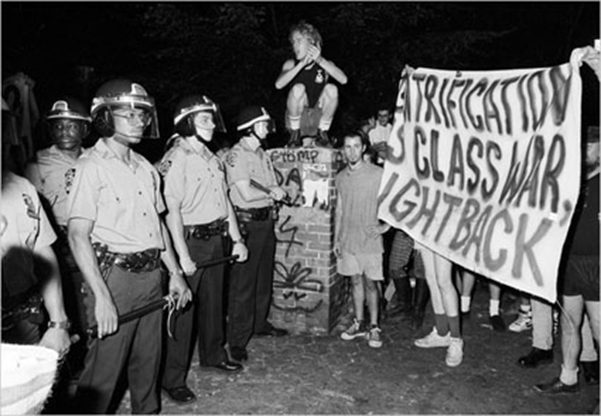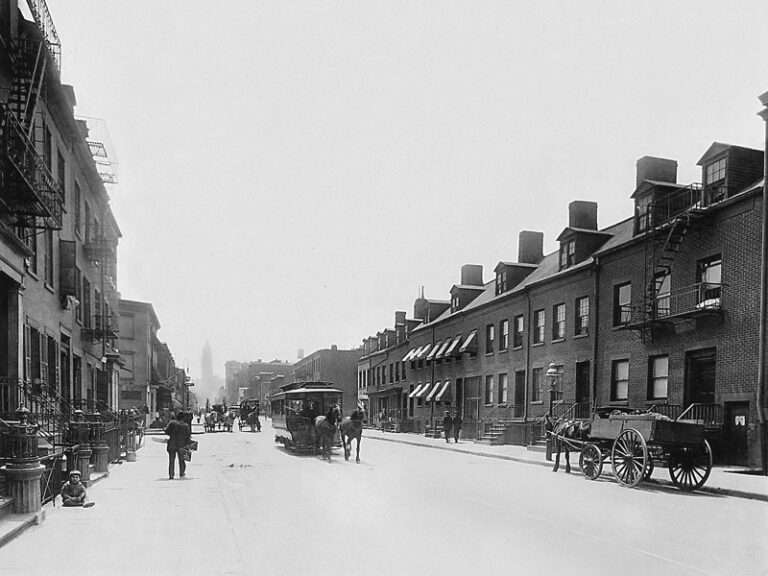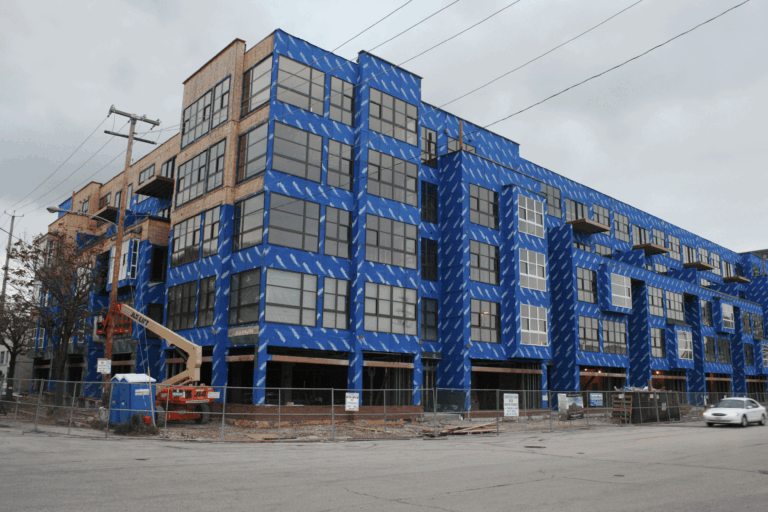Physical Address
304 North Cardinal St.
Dorchester Center, MA 02124
Physical Address
304 North Cardinal St.
Dorchester Center, MA 02124

Over at Greater Greater Washington, Ms. Cheryl Cort attempts to temper expectations of what she calls the “libertarian view (a more right-leaning view in our region)” on affordable housing. It is certainly reassuring to see the cosmopolitan left and the pro-market right begin to warm to the benefits of liberalization of land-use. Land-use is one area the “right,” in it’s fear of change, has failed to embrace a widespread pro-market stance. Meanwhile, many urban-dwellers who consider themselves on the “left” unknowingly display an anti-outsider mentality typically attributed to the right’s stance on immigration. Unfortunately, in failing to grasp the enormity of the bipartisan-caused distortion of the housing market, Ms. Cort resigns to advocate solutions that fail to deliver widespread housing affordability. Yes, adding more housing must absolutely be a part of the strategy to make housing more affordable. And zoning changes to allow people to build taller and more usable space near transit, rent out carriage houses, and avoid expensive and often-unnecessary parking are all steps in the right direction. But some proponents go on to say relaxing zoning will solve the problem all on its own. It won’t. Well, if “relaxing” zoning is the solution at hand, she may be right – relaxing will only help a tad… While keenly aware of the high prices many are willing to pay, Cort does not seem to grasp the incredible degree to which development is inhibited by zoning. “Relaxing” won’t do the trick in a city where prices are high enough to justify skyscrapers with four to ten times the density currently allowed. When considering a supply cap that only allows a fraction of what the market demands, one can not reasonably conclude “Unlimited FAR” (building density) would merely result in a bit more development here and there. A radically liberalized land-use regime would […]

Gentrification is the result of powerful economic forces. Those who misunderstand the nature of the economic forces at play, risk misdirecting those forces. Misdirection can exasperate city-wide displacement. Before discussing solutions to fighting gentrification, it is important to accept that gentrification is one symptom of a larger problem. Anti-capitalists often portray gentrification as class war. Often, they paint the archetypal greedy developer as the culprit. As asserted in jacobin magazine: Gentrification has always been a top-down affair, not a spontaneous hipster influx, orchestrated by the real estate developers and investors who pull the strings of city policy, with individual home-buyers deployed in mopping up operations. Is Gentrification a Class War? In a way, yes. But the typical class analysis mistakes the symptom for the cause. The finger gets pointed at the wrong rich people. There is no grand conspiracy concocted by real estate developers, though it’s not surprising it seems that way. Real estate developers would be happy to build in already expensive neighborhoods. Here, demand is stable and predictable. They don’t for a simple reason: they are not allowed to. Take Chicago’s Lincoln Park for example. Daniel Hertz points out that the number of housing units in Lincoln Park actually decreased 4.1% since 2000. The neighborhood hasn’t allowed a single unit of affordable housing to be developed in 35 years. The affluent residents of Lincoln Park like their neighborhood the way it is, and have the political clout to keep it that way. Given that development projects are blocked in upper class neighborhoods, developers seek out alternatives. Here’s where “pulling the strings” is a viable strategy for developers. Politicians are far more willing to upzone working class neighborhoods. These communities are far less influential and have far fewer resources with which to fight back. Rich, entitled, white areas get down-zoned. Less-affluent, disempowered, minority […]

Co-authored with Anthony Ling, editor at Caos Planejado Gentrification Gentrification is the process through which real estate becomes more valuable and, therefore, more expensive. Rising prices displace older residents in favor of transplants with higher incomes. This shouldn’t be confused with the forced removal of citizens via eminent domain or “slum clearance.” Ejecting residents by official fiat is a different problem entirely. A classic example of gentrification is that of Greenwich Village, New York. Affluent residents initially occupied the neighborhood. It later became the city’s center for prostitution, prompting an upper-middle class exodus. Low prices and good location would later attract the textile industry. This was the neighborhood’s first wave of gentrification. But after a large factory fire, the neighborhood was once again abandoned. Failure, however, would give way to unexpected success: artists and galleries began to occupy the vacant factories. These old industrial spaces soon became home to one of the most important movements in modern art. In Greenwich Village, different populations came and went. And in the process they each made lasting contributions to New York’s economic and cultural heritage. This was only possible because change was allowed to take place. But change isn’t always easy. As a neighborhood becomes more popular, it also becomes more expensive. Tensions run high when long-time residents can’t afford rising rents. Some begin to call for rent controls or other measures to prevent demographic churn. But rent control is a temporary fix at best; in the longer term, its effects are negative. By reducing supply, rent control tends to drive up the cost of housing. And in the face of price controls, landlords may seek to exit the rental market entirely, further exacerbating any housing shortage. What, then, does this mean for urban development? How can cities evolve without completely displacing their middle and […]
Want to live in San Francisco? No problem, that’ll be $3,000 (a month)–but only if you act fast. In the last two years, the the cost of housing in San Francisco has increased 47% and shows no signs of stopping. Longtime residents find themselves priced out of town, the most vulnerable of whom end up as far away as Stockton. Some blame techie transplants. After all, every new arrival drives up the rent that much more. And many tech workers command wages that are well above the non-tech average. But labelling the problem a zero sum class struggle is both inaccurate and unproductive. The real problem is an emasculated housing market unable to absorb the new arrivals without shedding older residents. The only solution is to take supply off its leash and finally let it chase after demand. Strangling Supply From 2010 to 2013, San Francisco’s population increased by 32,000 residents. For the same period of time, the city’s housing stock increased by roughly 4,500 units. Why isn’t growth in housing keeping pace with growth in population? It’s not allowed to. San Francisco uses what’s known as discretionary permitting. Even if a project meets all the relevant land use regulations, the Permitting Department can mandate modifications “in the public interest”. There’s also a six month review process during which neighbors can contest the permit based on an entitlement or environmental concern. Neighbors can also file a CEQA lawsuit in state court or even put a project on the ballot for an up or down vote. This process is heavily weighted against new construction. It limits how quickly the housing stock can grow. And as a result, when demand skyrockets so do prices. To remedy this, San Francisco should move from discretionary to as-of-right permitting. In an as-of-right system, it’s much […]

Alain Bertaud is probably the most interesting urbanist you’ve haven’t heard about. He is a senior researcher at the NYU Stern Urbanization Project next to names such as Paul Romer and Solly Angel. Bertaud used to be the lead urbanist at the World Bank, and Ed Glaeser has said that everything he knows about land use restrictions in developing countries he has learned from Alain. Bertaud has also worked as a consultant and/or resident urbanist in cities such as Bangkok, San Salvador, Port-au-Prince, Sana’a, New York, Paris, Tlemcen and Chandigarh. Our Brazilian collaborator Anthony Ling, editor of Caos Planejado, met Bertaud at the NYU DRI conference last year entitled “Cities and Development: Urban Determinants of Success”, who gave us the following interview: AL: You are currently writing a book tentatively titled “Order Without Design”, which in some way relates to the title of our website, “Planned Chaos”. What do you mean by the title of your next book – what should readers expect of it? AB: “Order without design” is a quotation from Hayek that he uses in a different context in “The Fatal Conceit”: “Order generated without design can far outstrip plans men consciously contrive”. In the context of cities it means that cities themselves are mostly self generated by simple rules and norms applied to immediate neighbors but with overall design concept designed by one person or a group of designers. The spatial structure of large cities is a mix of top-down design and spontaneous order created by markets. Spontaneous order appears in the absence of a designer’s intervention when markets and norms regulate relationships between immediate neighbors. Most evolving natural structures, from coral reefs to starlings’ swarms, are created by spontaneous order. The objective of my book is to show that top-down design should be reduced to a minimum and much more room should […]
Last week, Nick Josefowitz unseated a multi-decade incumbent for a spot on the BART board of directors. Normally I don’t pay too much attention to elections, but Mr. Josefowitz might actually have some good ideas. For everyone outside the Bay Area, the BART (Bay Area Rapid Transit) system is a commuter rail line that constitutes the vital transportation link between the East Bay and San Francisco. On a typical weekday it provides 400,000 rides and that number is increasing as the regional economy continues to boom. Suffice it to say that BART is a big deal to a lot of people who rely on it every day (myself included). While Josefowitz’s campaign website talks about cleaning up dirty stations and increasing late night train availability, I had the privilege of hearing him outline an interesting proposal during a private, small group discussion some months ago. According to Josefowitz, BART sits on a substantial amount of real estate in the form of station parking lots. His proposal was to repurpose some of this space as high density housing. This would help with the region’s housing shortage and support BART ridership by clustering population around the system’s stations and the lost spots could be offset by building parking structures on the remaining lot space (many BART parking lots are ground level only as opposed to multi-level parking structures). This sounded a lot like Hong Kong’s integrated rail-property development approach which has proven to be an unqualified success, so my interest was definitely piqued. As always, there’s plenty of which to be skeptical. The fact that the proposal was brought up in a private discussion, but isn’t listed on the campaign website may say something about where it falls in Josefowitz’s priorities. Also, it’s difficult to tell how effective the incoming director will be […]

Debates over land use policy often devolve into opponents arguing over how to interpret the same set of facts. For example, “market suburbanists” argue that because apartments in walkable neighborhoods tend to cost more per square foot than suburban single family homes, high densities make coastal cities expensive. Smart Growth advocates may look at the same data and argue that zoning rules that restrict the supply of high-density housing in desirable locations is what makes housing expensive. In order to provide clarity to the debate on land use regulations, Mike Lewyn and Kip Jackson survey the zoning codes of the 24 cities with populations between 500,000 and 1,000,000 residents. In their new Mercatus Center study, they find that while some cities have in fact enacted the sorts of policies that market suburbanists fear — minimum density requirements and maximum parking rules — these regulations remain very rare relative to near-ubiquitous maximum density rules and minimum parking requirements. Lewyn and Jackson list the mid-size cities that have adopted various types of Smart Growth regulations below. While a handful of cities have adopted the types of regulations they surveyed, every U.S. city in this sample has a maze of traditional zoning rules. A perpetual challenge in studying the effects of both traditional and Smart Growth regulations is finding data. Municipal codes are all housed on unique websites with varying degrees of accessibility. The difficulty of achieving clear answers as to what causes high housing prices contributes to advocates of traditional zoning and Smart Growth to shout past one another. While Smart Growth as a whole is maligned by some advocates of the free market, many Smart Growth tenets are actually deregulatory. Policy changes including upzoning, reducing parking requirements, and permitting mixed-use development are all steps toward laissez-faire land use relative to the status-quo, even though these policies […]

Affordable housing policies have a long history of hurting the very people they are said to help. Past decades’ practices of building Corbusian public housing that concentrates low-income people in environments that support crime or pursuing “slum clearance” to eliminate housing deemed to be substandard have largely been abandoned by housing affordability advocates for the obvious harm that they cause stated beneficiaries. While rent control remains an important feature of the housing market in New York and San Francisco, even Bill de Blasio’s deputy mayor acknowledges the negative consequences of strong rent control policies. In the U.S. and abroad, politicians and pundits are beginning to vocalize the fact that maintaining and improving housing affordability requires housing supply to increase in response to demand increases. While support for older housing affordability policies has dissipated, the same isn’t true of inclusionary zoning. From New York to California, housing affordability advocates tout IZ as a cornerstone of successful housing policy. IZ has emerged as the affordable housing policy of choice because it has the benefit of supporting socioeconomic diversity, and its costs are opaque and dispersed over many people. However, IZ has several key downsides including these hidden costs and a failure to meaningfully address housing affordability for a significant number of people. Shaila Dewan of the New York Times captures the strangeness of IZ’s popularity: New York needs more than 300,000 units by 2030. By contrast, inclusionary zoning, a celebrated policy solution that requires developers to set aside units for working and low-income families, has created a measly 2,800 affordable apartments in New York since 2005. Montgomery County, a Maryland suburb of DC, has perhaps the most well-established IZ policy in the country. After 30 years, the program has produced about 13,000 units. Montgomery County is home to over one million people, 20 percent of whom have a household income of less than $43,000 annually. While this is an extraordinarily high income distribution relative to the rest of the country, this makes the […]
The destruction of inner cities at the hands of bureaucrats wielding eminent domain has been well documented by urban theorists from Jane Jacobs to Richard Epstein. As Ilya Somin points out, eminent domain has played an important role in destroying property in Detroit, contributing to its population losses. Dating back to the implementation of Title 1 of the Housing Act of 1949, urban policymakers began using federal funds for slum clearance. Unsurprisingly, destruction of housing units correlated with the population decline in Detroit and other cities. While one would think that the horrors of slum clearance under Title 1 have been adequately demonstrated to prevent planners from pursuing neighborhood destruction as an economic growth strategy, cities across the country continue using eminent domain to clear “blighted” neighborhoods. Last year Denver declared an area of its Five Points neighborhood, including 246 homes, blighted, meaning that now developers interested in building in the area can request the city to use eminent domain to grant them the properties that they want. While the Atlantic Yards project received extensive press coverage, policymakers often employ eminent domain more quietly on behalf of stadium builders, benefiting sports fans at a dear cost to neighborhood residents and business owners. Like urban renewal projects dating back to the 1950s, Forest City Ratner has failed to deliver the promised housing that was part of the Atlantic Yards agreement when the city agreed to condemn the neighborhood. Perhaps Robert Caro provides the most poignant description of the horrors of eminent domain in The Power Broker, explaining the losses of neighborhood cohesion when the tool is used to demolish private housing to be replaced by public housing or in some cases vacant lots when promised public works are not delivered. One would think that the well-documented failures of urban renewal would lead policymakers […]
Adam, Stephen, and I have previously written on some of the downsides of homeownership from an urbanist perspective; owner-occupied units are biased toward being single family homes, and when owner-occupied units are condos, they carry many detrimental characteristics for redevelopment. Despite the negative outcomes of homeownership from a market urbanist perspective, the pervasive conventional wisdom remains that an owning a home is a path to financial well-being. Even including the government policies designed to improve homeownership as an investment, from the mortgage interest tax deduction, to subsidized home loans, to the capital gains tax break for homes, owning a home is still not the fool-proof investment that many people seem to believe it is. A recent Times Dispatch article reveals this commonly held belief. The reporter quotes the CEO of the Richmond Association of Realtors without noting that her profession depends on the buying and selling of owner-occupied homes: “Homeownership always trumps rental when it comes to the accumulation of equity and wealth over time,” Lafayette said. Given that interest rates remain near historic lows, a monthly mortgage payment for many households makes more sense than paying rent, she said. While it is true that paying down mortgage principal is a form of forced saving, this analysis does not take into account the opportunity cost of what else households could be doing with their home equity, such as investing it in the stock market in a tax-advantaged retirement account. For example, this New York Times rent vs. own calculator does not take into account an accurate opportunity cost of making a downpayment. In the default example, the owner pays a $34,400 downpayment, but the calculator does not take into consideration the renter’s potential return on investing $34,400 over the same time period in a tax-advantaged retirement account. While many people believe that […]